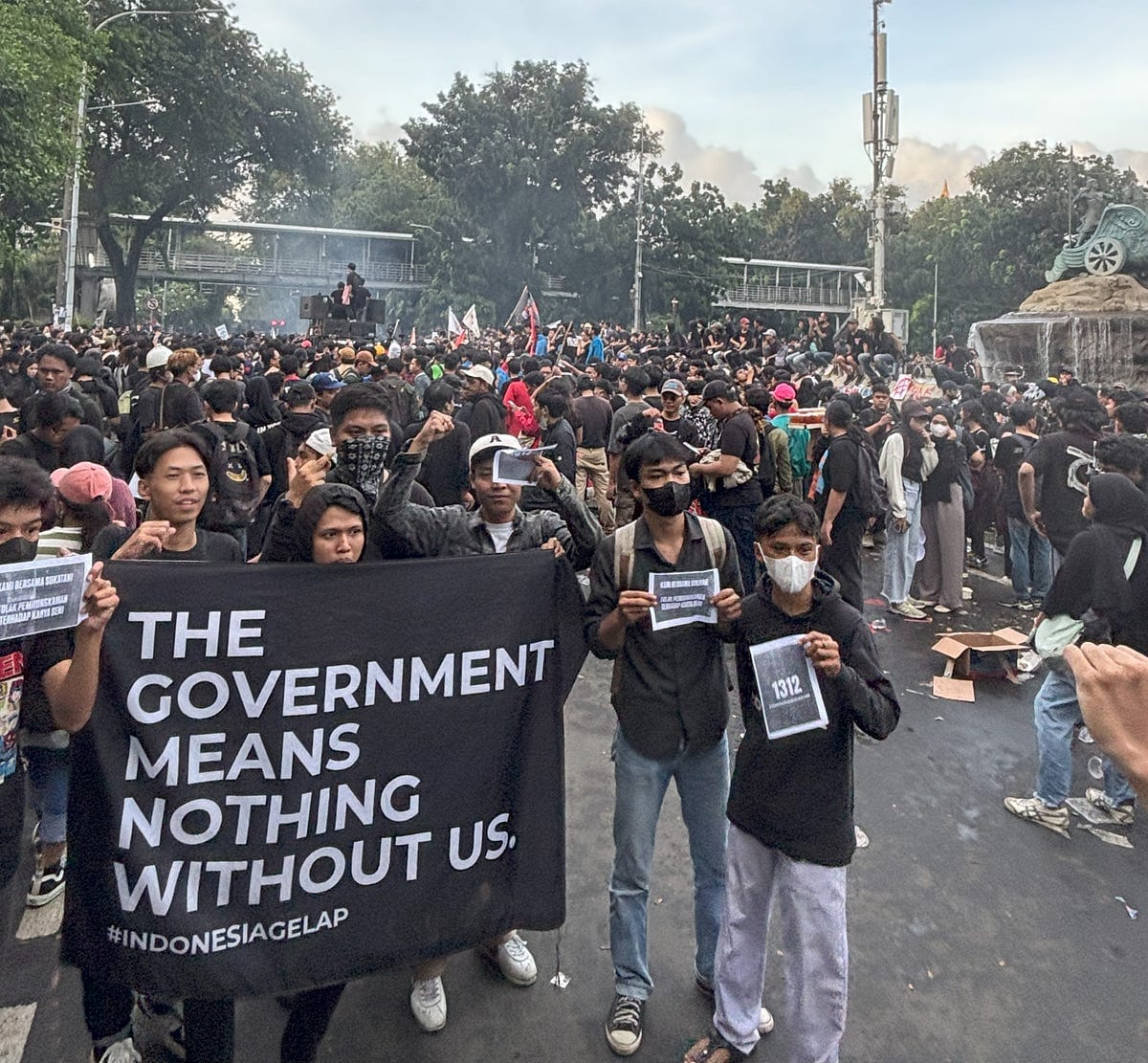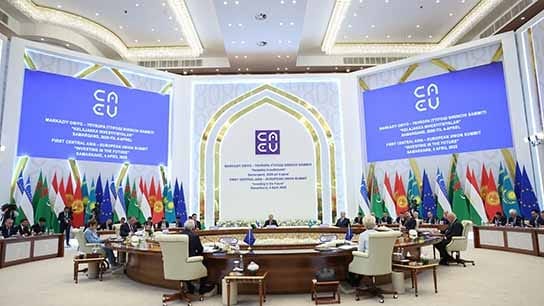Indonesia’s Protest Wave
Perks, Policing, and the Politics of Discontent

Indonesia has had a long history of protests. The country recently saw another wave of street protests and violence across major cities. The death of a young motorbike rider during these protests also underscores the human cost of civic unrest. Beyond the immediate spark, the unrest also exposes deeper questions about accountability, governance, and economic fairness in one of the world’s largest democracies in the world.
The trigger and timeline
The spark came when details of housing allowances, overseas travel budgets, and other benefits for members of parliament were circulated widely on social media. Public outrage grew quickly, with critics pointing to rising living costs for ordinary Indonesians. Demonstrations began in Jakarta and soon spread to Surabaya, Bandung, and other cities. Tensions escalated when a 21‑year‑old motorbike rider was killed in a collision with a police vehicle during a protest rally, further amplifying calls for accountability. In several cities, protesters also set fire to regional government buildings; in Makassar, at least three people died after being trapped inside one such blaze. In response, parliamentary leaders announced a suspension of overseas travel privileges and pledged to review the allowances for lawmakers. The government also tightened security measures and launched investigations into both the benefits controversy and the protest fatality.
Political context
When President Prabowo Subianto assumed office, he came with a strong electoral mandate and a platform emphasizing stability and national development. His leadership, however, continues to be scrutinised for possible authoritarian reflexes rooted in his military background. Parliament, meanwhile, reflects Indonesia’s fragmented party system, where coalition building requires constant negotiation and incentives. Controversies over allowances are seen as symptoms of broader “money politics,” where resources are used for buying loyalties and ensuring smooth governance. Civil society organizations, student groups, and media outlets remain active but face challenges in holding institutions accountable. Although post‑1998 Reformasi architecture created the democratic space, institutional weaknesses often leave public trust vulnerable when scandals emerge.
Policing, accountability, and rule of law
The police response to these protests has also drawn close attention. Crowd‑control tactics remain under scrutiny because there have been several incidents of excessive force in past protests. Oversight bodies have announced inquiries into the fatality and allegations of misconduct, but their effectiveness depends on transparent follow‑through. For many Indonesians, the credibility of the state will hinge not on statements but on visible outcomes: prosecutions, disciplinary actions, and reforms in policing practices. Without such accountability, trust in the rule of law risks further erosion.
Economic backdrop
Public anger was amplified by economic pressures. Despite headline economic growth of around five percent, many Indonesians face persistent challenges in securing stable livelihoods. Youth underemployment remains high, and urban workers often rely on precarious gig or informal jobs. The gap between macro‑economic performance and household security shapes perceptions of unfairness. Financial markets have reflected this tension, with the rupiah and equities experiencing volatility as investors weigh governance risks. Confidence in institutional credibility is therefore not just a domestic political matter but a factor in sustaining investment and long‑term growth.
Indonesia’s protest cycles in context
The latest demonstrations fit into a longer pattern. The 1998 Reformasi movement ended authoritarian rule and established protest as a legitimate channel of expression. Since then, student and labour mobilizations have challenged corruption, fuel price hikes, and major legislative reforms. Episodes such as the 2019 protests against the Criminal Code revision, and 2020 protests against the omnibus law showed how grievances can quickly converge into large‑scale mobilization. In a system where institutional responses are often slow or opaque, the streets remain a critical arena for political accountability. The recurrence of protests underscores their role as both a pressure valve and a signal of gaps in representation.
Key actors and interests
Such protests affect almost every strata of the society. The presidency and cabinet face the task of balancing public anger with the need to maintain stability. Parliamentary leaders must manage internal divisions while responding to reputational damage from the benefits scandal. The police and the military, or TNI, operate within defined but sometimes contested boundaries in handling domestic unrest. Outside the government, student groups, labour unions, professional associations, and faith‑based networks provide organisational muscle and moral authority to protests. Businesses and investors are also stakeholders, as perceptions of stability affect investment decisions. Digital platforms amplify mobilization, framing narratives that shape both domestic and international opinion.
Regional and global significance
Indonesia’s importance extends beyond its borders. As a G20 member, ASEAN’s largest economy, and a hub in global supply chains and maritime routes, its domestic governance signals resonate internationally. Partners and investors observe Jakarta’s handling of dissent as an indicator of stability, continuity of policy, and respect for civil liberties. Effective crisis management enhances Indonesia’s reputation as a reliable regional anchor. Conversely, heavy‑handed responses risk raising concerns about political risk and governance credibility.
Scenarios and indicators to watch
Three broad scenarios are possible. A reform track would involve credible investigations, concrete ethics reforms in parliament, and structured engagement with civil society. A muddle‑through path would see symbolic concessions that ease tensions temporarily but leave structural issues unresolved, leading to periodic flare‑ups. A hardline reflex, meanwhile, would rely on securitized responses, risking deeper alienation and long‑term instability. Key indicators to monitor include outcomes of investigations, whether legislative reform on remuneration and disclosure is enacted, changes in rules of engagement for security forces, signals from coalition negotiations, and clarity in government economic communication.
Conclusion
At the heart of the protests lies a simple question: do political rules align with public expectations of fairness? Indonesia’s democratic test is to convert promises of accountability into enforceable standards that citizens can trust. If visible reforms follow, the unrest could strengthen institutions and reinforce the credibility of the system. If not, the same pressures will resurface, ensuring that public discontent remains a recurring feature of Indonesia’s political landscape.




Comments ()